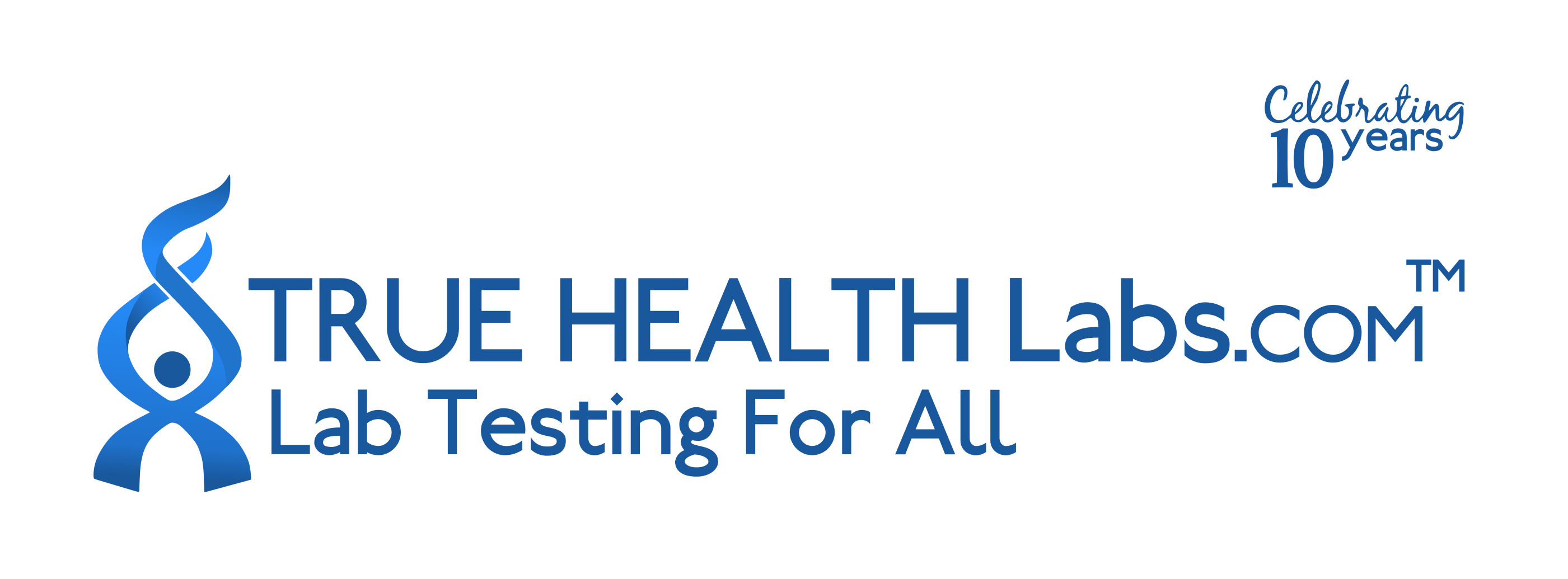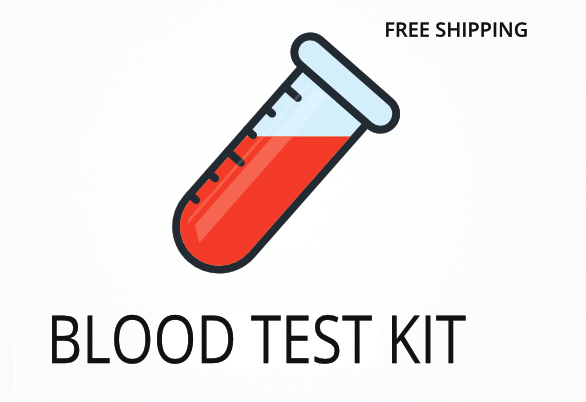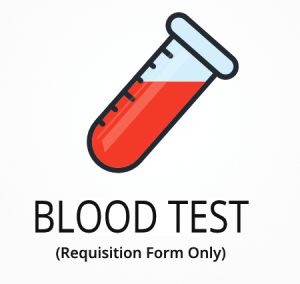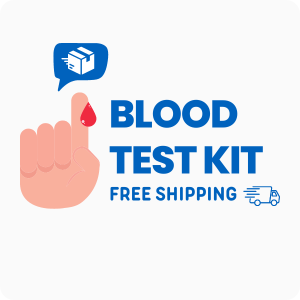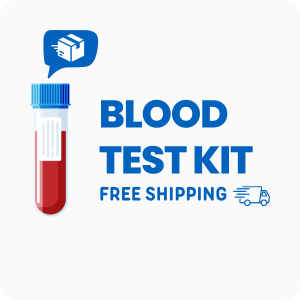Ordering the Lymphocyte MAP (Comprehensive Immunophenotyping of Lymphocytes) | Cyrex Labs
The Lymphocyte MAP from Cyrex Labs provides a detailed look at the different types of white blood cells, including T cells, B cells, and natural killer cells, to help identify immune system imbalances. This test is often ordered to help clarify the cause of symptoms like joint pain, chronic fatigue, or unexplained inflammation, and to monitor immune function in people with autoimmune or chronic conditions. Interestingly, this test can also reveal subtle immune shifts that may not show up on standard blood counts, offering a more complete view of immune activity.
Ordering this test can help you:
- Pinpoint specific immune cell imbalances that may be linked to symptoms or chronic conditions
- Track immune system changes over time, especially during treatment or after exposure to triggers
- Identify patterns that may suggest autoimmune activity or immune suppression
- Support decisions about targeted therapies or lifestyle changes
- Detect immune shifts that could affect how your body responds to infections or inflammation
Who Should Consider Immune Cell Profiling
People who have ongoing joint pain, skin rashes, or digestive issues that have not improved with standard care may benefit from this test. For example, someone who has tried multiple diets and medications for persistent fatigue and brain fog, but still has no clear answers, could use this test to uncover hidden immune imbalances.
Ordering this test may also be helpful in these situations:
- Experiencing new or worsening symptoms after a viral infection
- Managing a diagnosed autoimmune condition like lupus or rheumatoid arthritis
- Dealing with unexplained food sensitivities or reactions
- Monitoring immune function during or after long-term corticosteroid use
- Noticing recurring mouth ulcers, which can sometimes be linked to immune cell changes
This test can help clarify the cause of symptoms by measuring specific immune cell types and their ratios, which can guide treatment or further testing. Delaying this test may mean missing early signs of immune imbalance, which could make it harder to address symptoms or prevent complications.
How to Prepare for the Test
Fasting is not required for the Lymphocyte MAP, so you can eat and drink as usual before your blood draw. Always follow any instructions or special guidance your doctor or healthcare provider gives you to make sure your sample is collected correctly and processed without delay.
Labs Included When Ordering Your Lymphocyte MAP (Comprehensive Immunophenotyping of Lymphocytes) | Cyrex Labs
| Test Name | Reference Range | What This Marker Means | Low and High Levels of Lymphocyte MAP |
|---|---|---|---|
| Total WBC | 4.0 – 10.5 | Total white blood cell count shows the number of immune cells in your blood. It helps detect infection, inflammation, or immune suppression. | High levels mean your body may be fighting an infection or inflammation.
Low levels mean your immune system may be suppressed or not making enough white blood cells. |
| Total Lymphocyte | 1.0 – 3.0 | Lymphocytes are a type of white blood cell important for fighting infections and regulating immune responses. | High levels mean possible viral infection or immune activation.
Low levels mean increased risk of infection or immune deficiency. |
| Total T Cell | 0.7 – 2.1 | T cells help control immune responses and attack infected or abnormal cells. They are key in autoimmune and chronic conditions. | High levels mean increased immune activity or possible autoimmune response.
Low levels mean weakened immune defense or immune suppression. |
| Total B Cell | 0.1 – 0.5 | B cells make antibodies to help fight infections and are involved in some autoimmune reactions. | High levels mean possible chronic infection or autoimmune activity.
Low levels mean reduced antibody production and higher infection risk. |
| % T-Helper (CD4) Cell | 30 – 60 | T-helper cells (CD4) coordinate immune responses and help other cells do their jobs. | High levels mean possible immune activation or chronic inflammation.
Low levels mean weakened immune coordination, as seen in some viral infections. |
| % Cytotoxic (CD8) T Cell | 15 – 40 | Cytotoxic T cells (CD8) destroy infected or abnormal cells and help control infections. | High levels mean active infection or immune response.
Low levels mean reduced ability to fight infections or cancer cells. |
| CD4/ CD8 Ratio | 1.0 – 3.5 | This ratio compares helper to cytotoxic T cells, showing immune system balance and function. | High levels mean possible immune overactivity or chronic inflammation.
Low levels mean immune suppression or viral infection. |
| Total T-Helper-1 Cell | 0.2 – 0.7 | T-helper-1 cells help fight viruses and some bacteria, and are involved in autoimmune reactions. | High levels mean increased inflammation or autoimmune activity.
Low levels mean reduced defense against certain infections. |
| Total T-Helper-2 Cell | 0.1 – 0.5 | T-helper-2 cells help control allergic responses and fight parasites. | High levels mean possible allergies or chronic inflammation.
Low levels mean reduced ability to manage allergic reactions. |
| % T-Helper-17 | 0.5 – 2.0 | T-helper-17 cells are involved in inflammation and autoimmune conditions, especially in the gut and joints. | High levels mean increased risk of autoimmune or inflammatory disease.
Low levels mean reduced inflammatory response. |
| % Regulatory T Cell | 5 – 10 | Regulatory T cells help control immune responses and prevent autoimmunity. | High levels mean possible immune suppression.
Low levels mean higher risk of autoimmune reactions. |
| Th17/Treg Ratio | 0.5 – 2.0 | This ratio shows the balance between inflammation (Th17) and immune regulation (Treg). | High levels mean increased inflammation or autoimmunity.
Low levels mean more immune regulation and less inflammation. |
| Total NK Cell | 0.1 – 0.6 | Natural killer (NK) cells help destroy virus-infected and cancer cells. | High levels mean increased immune surveillance.
Low levels mean reduced ability to fight infections or abnormal cells. |
| Total Cytotoxic NK Cells | 0.05 – 0.3 | Cytotoxic NK cells are a subset of NK cells that directly kill infected or abnormal cells. | High levels mean active immune response.
Low levels mean less protection against infections or tumors. |
| Total NKT | 0.01 – 0.1 | NKT cells share features of T cells and NK cells, helping regulate immune responses and inflammation. | High levels mean increased immune regulation or inflammation.
Low levels mean reduced immune regulation. |
| % Lymphocyte | 20 – 40 | This shows the percentage of lymphocytes among all white blood cells, reflecting immune system activity. | High levels mean possible viral infection or immune activation.
Low levels mean immune suppression or bone marrow issues. |
| % T Cell | 60 – 85 | This shows the proportion of T cells among lymphocytes, important for immune defense and regulation. | High levels mean increased immune activity.
Low levels mean reduced immune defense. |
| % B Cell | 5 – 20 | This shows the proportion of B cells among lymphocytes, which make antibodies. | High levels mean possible chronic infection or autoimmune activity.
Low levels mean reduced antibody production. |
| T Cell/ B Cell Ratio | 3.0 – 10.0 | This ratio compares T cells to B cells, showing immune system balance and function. | High levels mean more T cell activity.
Low levels mean more B cell activity or possible immune imbalance. |
| Total T-Helper (CD4) Cell | 0.4 – 1.4 | Total CD4 cells help coordinate immune responses and support other immune cells. | High levels mean immune activation.
Low levels mean weakened immune coordination. |
| Total Cytotoxic (CD8) T cell | 0.2 – 0.8 | Total CD8 cells destroy infected or abnormal cells and help control infections. | High levels mean active infection or immune response.
Low levels mean reduced ability to fight infections. |
| % T-Helper-1 Cell | 10 – 25 | Shows the percentage of T-helper-1 cells, which are involved in fighting viruses and some bacteria. | High levels mean increased inflammation.
Low levels mean reduced defense against certain infections. |
| % T-Helper-2 Cell | 5 – 15 | Shows the percentage of T-helper-2 cells, which help control allergic responses and fight parasites. | High levels mean possible allergies.
Low levels mean reduced ability to manage allergic reactions. |
| Th1/Th2 Ratio | 1.0 – 2.5 | This ratio shows the balance between Th1 and Th2 cells, which affects immune response type. | High levels mean more Th1 activity (inflammation).
Low levels mean more Th2 activity (allergy or chronic inflammation). |
| Total T-Helper-17 | 0.01 – 0.1 | Total Th17 cells are involved in inflammation and autoimmune conditions, especially in the gut and joints. | High levels mean increased risk of autoimmune or inflammatory disease.
Low levels mean reduced inflammatory response. |
| Total Regulatory T Cell | 0.05 – 0.2 | Total regulatory T cells help control immune responses and prevent autoimmunity. | High levels mean possible immune suppression.
Low levels mean higher risk of autoimmune reactions. |
| % NK Cell | 5 – 20 | Shows the percentage of natural killer cells, which help destroy virus-infected and cancer cells. | High levels mean increased immune surveillance.
Low levels mean reduced ability to fight infections or abnormal cells. |
| % Cytotoxic NK cells | 2 – 10 | Shows the percentage of cytotoxic NK cells, which directly kill infected or abnormal cells. | High levels mean active immune response.
Low levels mean less protection against infections or tumors. |
| % NKT | 0.1 – 1.0 | Shows the percentage of NKT cells, which help regulate immune responses and inflammation. | High levels mean increased immune regulation or inflammation.
Low levels mean reduced immune regulation. |
Reference ranges may change slightly as labs update their standards or as new research becomes available.
Lymphocyte MAP FAQ
Is there Lymphocyte MAP testing near me?
This is a test kit that can be collected at a local draw site; check the draw location link at the top of the page. For people with ongoing symptoms like joint pain or fatigue, having a nearby collection site makes it easier to get tested quickly and start finding answers.
How do I interpret the test results?
While your treating physician should review your results, you can also use our one-on-one test results review service with our clinical team for a detailed explanation and next steps.
What is the cost of the test?
The price listed for this test includes standard shipping to you and return shipping to the lab; draw fees may apply. Ordering this test can help you identify immune imbalances sooner, which may help you address symptoms more effectively.
How often should I retest?
Retesting is usually recommended every 6 to 12 months, especially if you are monitoring an autoimmune or chronic condition, or tracking changes after starting a new treatment. Regular retesting helps you and your doctor see how your immune system is responding over time.
How accurate is the test?
This test uses flow cytometry, a method that measures cell types and markers with high precision; specificity is 98% and sensitivity is 97%. TrueHealthLabs.com partners with CLIA-certified and CAP-certified laboratories to uphold rigorous testing standards for dependable results.
Important Notes
- It is recommended to be clear of immunosuppressants and corticosteroids for at least 60 days prior to taking this test. Please consult with your prescribing healthcare provider.
- THIS TEST IS ONLY AVAILABLE IN THE US EXCEPT FOR NEW YORK. SPECIMEN DRAWS CAN BE COMPLETED IN NEIGHBORING STATES.
- The specimen must be returned to the lab within 24 hours of the collection period.
- READ: IMPORTANT Cyrex FAQs
- Due to circumstances beyond our control, pediatric blood draws are not included under Cyrex’s contracted phlebotomy. All patients 15 years of age and younger are included in the pediatric group. Pediatric blood draws must be scheduled by the parents at a laboratory of their choosing and paid for by the parent at the time of service.
Medical Review Board
Reviewed by Jeff Donohue M.D. from Body Logic and Brady Hurst DC, CCCN. Written by True Health Lab’s team of editorial health contributors.
Disclaimer: This information is for educational purposes only and not intended as medical advice. Consult your healthcare provider for personalized guidance.
Why Customers Trust True Health Labs – What People are saying
Also rated 4.6 out of 5 based on 3452 ShopperApproved reviews- See all TrueHealthLabs.com reviews.
